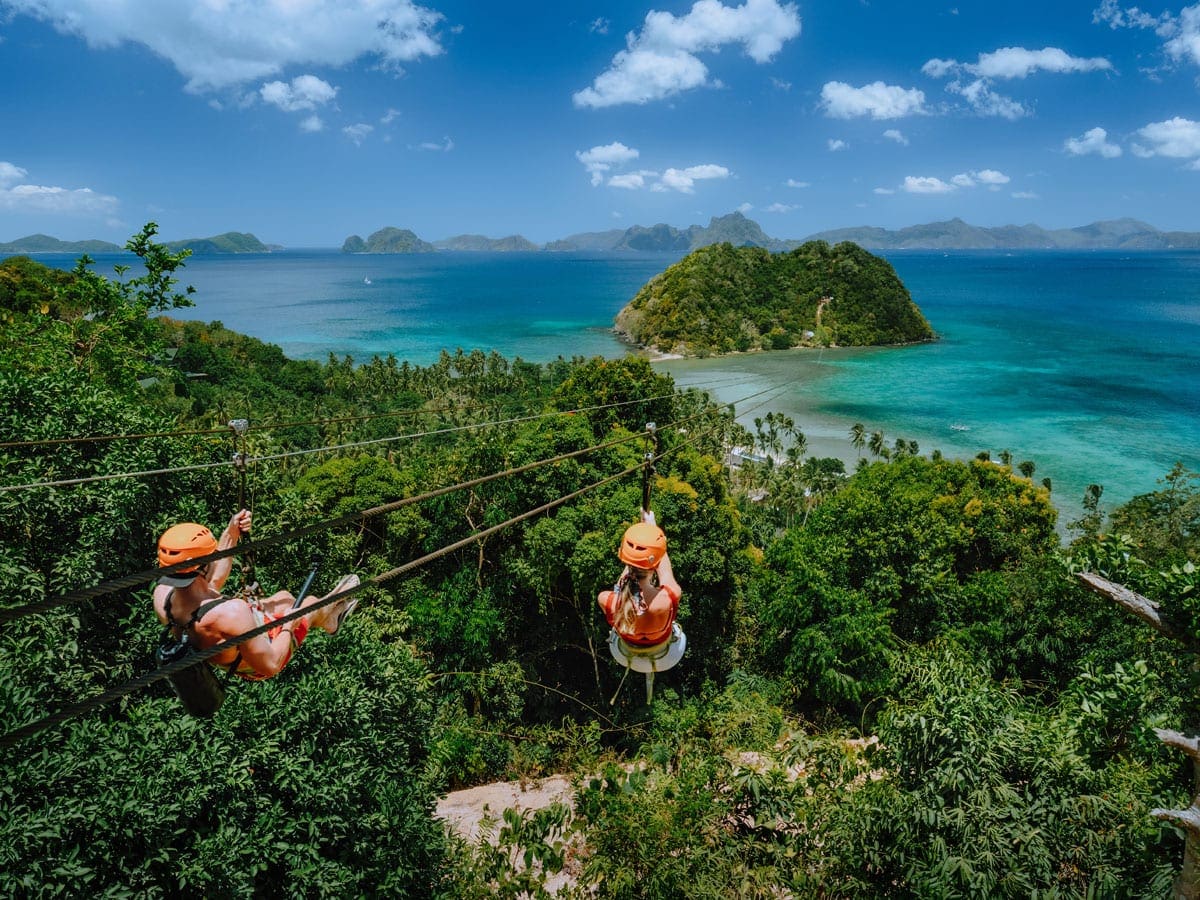Ecotourism, touted as a sustainable alternative to traditional tourism, has gained immense popularity in recent years. It promises not only the exploration of natural wonders but also the preservation of fragile ecosystems and the empowerment of local communities. However, amidst its glowing reputation, it's crucial to acknowledge that ecotourism isn't without its drawbacks. While it aims to strike a balance between environmental conservation and economic development, there are inherent challenges that need addressing. Understanding the disadvantages of ecotourism is essential for ensuring responsible travel practices and safeguarding the integrity of our planet's ecosystems.
Impact On Local Ecosystems
The influence of ecotourism on local ecosystems can be profound, often presenting a double-edged sword. While the intent of ecotourism is to promote conservation, the sheer influx of visitors can inadvertently lead to detrimental consequences for fragile ecosystems. Increased foot traffic in sensitive areas can result in habitat degradation, soil erosion, and disruption to wildlife habitats. Activities such as hiking, camping, and wildlife viewing, though intended to connect visitors with nature, can inadvertently disturb natural processes and wildlife behavior. Moreover, the construction of infrastructure to support tourism, such as trails, lodges, and viewing platforms, can further fragment habitats and disrupt ecological connectivity.
Additionally, ecotourism may inadvertently introduce invasive species through the movement of people and goods, further threatening native flora and fauna. Even well-managed ecotourism operations can have unintended consequences, as the cumulative impact of numerous visitors over time can exceed the carrying capacity of fragile ecosystems. Consequently, it's imperative for ecotourism initiatives to adopt comprehensive environmental management strategies that prioritize the conservation and restoration of natural habitats while providing meaningful visitor experiences. By striking a delicate balance between visitor access and ecosystem protection, ecotourism can fulfill its potential as a force for positive environmental change while minimizing its ecological footprint.

Over-Tourism
Over-tourism, a pressing concern associated with ecotourism, arises when destinations become overwhelmed by the sheer volume of visitors, exceeding their carrying capacity. This phenomenon can lead to a myriad of negative consequences, including overcrowding, environmental degradation, strain on infrastructure, and conflicts between tourists and local communities. Over-tourism not only compromises the quality of the visitor experience but also threatens the integrity of natural and cultural heritage sites. Moreover, the pursuit of profit often prioritizes short-term economic gains over long-term sustainability, exacerbating the problem. Sustainable management strategies, such as implementing visitor quotas, regulating access, and diversifying tourism offerings, are essential for mitigating the impacts of over-tourism. By promoting responsible travel practices and fostering a deeper appreciation for destinations, stakeholders can work towards achieving a harmonious balance between tourism development and environmental conservation.
Cultural Exploitation
Cultural exploitation within the realm of ecotourism refers to the commodification and commercialization of indigenous cultures and traditions for the entertainment and consumption of tourists. This phenomenon often occurs when local communities feel pressured to conform to tourist expectations, resulting in the distortion or dilution of their cultural heritage. Traditional practices may be exaggerated or altered to cater to tourist preferences, leading to the loss of authenticity and integrity. Furthermore, the unequal distribution of economic benefits from ecotourism can perpetuate social inequalities and marginalize certain groups within communities. Additionally, the portrayal of cultural stereotypes and caricatures for profit further perpetuates harmful narratives and reinforces power imbalances. To address cultural exploitation, it is essential for ecotourism initiatives to prioritize cultural sensitivity, engage in meaningful dialogue with local communities, and ensure that economic benefits are equitably distributed. By fostering mutual respect and understanding, ecotourism can become a platform for cultural exchange and celebration rather than exploitation.
Case Studies
Examining specific instances sheds light on the practical implications of ecotourism. For instance, the Galapagos Islands, situated off Ecuador's coast, demonstrate the complexities of balancing conservation and tourism. Despite stringent regulations, the islands face challenges like habitat degradation and invasive species introduction due to tourism. Similarly, Machu Picchu in Peru grapples with issues of overcrowding and environmental degradation. Efforts to manage visitor numbers and enforce conservation measures are ongoing, highlighting the ongoing struggle to preserve cultural and natural heritage sites amidst burgeoning tourism. These case studies underscore the importance of adopting sustainable management practices and fostering collaboration between stakeholders to mitigate the negative impacts of ecotourism while maximizing its benefits. Through a holistic approach that prioritizes environmental conservation, community empowerment, and responsible tourism, these destinations can continue to inspire awe and wonder while safeguarding their unique ecosystems and cultural legacies for future generations.
Galapagos Islands, Ecuador
The Galapagos Islands, located off the coast of Ecuador, ecotourism serve as a paradigmatic example of the complexities surrounding ecotourism. Despite their renowned biodiversity and status as a UNESCO World Heritage Site, the islands have grappled with the challenges posed by tourism. The influx of visitors has led to habitat degradation, introduction of invasive species, and disruption of fragile ecosystems. Efforts to regulate tourism and minimize its impact have been implemented, including visitor quotas and strict conservation measures. However, balancing conservation with economic development remains a persistent challenge. Sustainable tourism practices, such as promoting responsible visitor behavior and supporting local conservation efforts, are crucial for safeguarding the unique biodiversity of the Galapagos Islands. By fostering a deeper understanding of the delicate balance between tourism and conservation, stakeholders can work towards ensuring the long-term sustainability of this iconic destination.
Machu Picchu, Peru
Machu Picchu, situated in Peru, stands as a testament to the intersection of ecotourism and cultural heritage preservation. As a UNESCO World Heritage Site and one of the world's most iconic archaeological wonders, Machu Picchu attracts a significant number of visitors each year. However, the surge in tourism has brought about challenges, including overcrowding, environmental degradation, and strain on local infrastructure. Efforts to manage tourism and mitigate its impacts have been implemented, such as limiting visitor numbers, enforcing conservation regulations, and promoting sustainable travel practices. Nevertheless, the delicate ecosystem surrounding Machu Picchu remains vulnerable to the pressures of mass tourism. Sustainable management strategies, including community involvement and responsible visitor behavior, are essential for preserving the cultural and natural integrity of this historic site. By fostering a balance between tourism and conservation, Machu Picchu can continue to inspire awe and wonder for generations to come.
Sustainable Practices In Ecotourism
Sustainable practices play a crucial role in mitigating the negative impacts of ecotourism while maximizing its benefits. These practices encompass a range of strategies aimed at promoting environmental conservation, supporting local communities, and fostering responsible tourism behavior. Examples include limiting visitor numbers through permits and quotas to prevent overcrowding and minimize environmental disturbance. Additionally, educating tourists about environmental and cultural sensitivity helps raise awareness and encourage respectful behavior. Investing in local community development projects and empowering indigenous groups ensures that economic benefits are equitably distributed and contribute to long-term social and economic sustainability. Supporting conservation initiatives and partnering with responsible tour operators further promotes environmental stewardship and ensures the preservation of natural habitats and biodiversity. By implementing these sustainable practices, ecotourism can become a powerful tool for promoting conservation, fostering cultural exchange, and supporting local livelihoods, all while minimizing its ecological footprint.
Limiting visitor numbers through permits and quotas
Educating tourists about environmental and cultural sensitivity
Investing in local community development and empowerment
Supporting conservation initiatives and responsible tour operators
Promoting low-impact activities and eco-friendly accommodations
Conclusion
While ecotourism presents numerous benefits in terms of environmental conservation, economic development, and cultural exchange, it is not without its challenges. The disadvantages of ecotourism, including its impact on local ecosystems, issues of over-tourism, and the risk of cultural exploitation, highlight the need for careful management and sustainable practices. By addressing these challenges through comprehensive planning, community involvement, and responsible visitor behavior, ecotourism can fulfill its potential as a positive force for both people and planet. It is essential for stakeholders to work together to strike a balance between the promotion of tourism and the protection of natural and cultural heritage. Through collaborative efforts and a commitment to sustainability, ecotourism can continue to thrive while ensuring the long-term preservation of our planet's precious resources.
FAQs
Is ecotourism always sustainable?
Ecotourism has the potential to be sustainable, but it requires careful planning, management, and community involvement to mitigate its negative impacts.
How can over-tourism be addressed in ecotourism destinations?
Over-tourism can be addressed through measures such as limiting visitor numbers, implementing visitor management strategies, and promoting alternative destinations.
What role do local communities play in ecotourism?
Local communities are integral to ecotourism, as they often serve as hosts, guides, and stewards of natural and cultural resources. Involving communities in decision-making and benefit-sharing is essential for the success of ecotourism initiatives.
What are some examples of sustainable ecotourism practices?
Sustainable ecotourism practices include minimizing carbon footprint, supporting local businesses, respecting wildlife and natural habitats, and conserving water and energy.
How can tourists contribute to responsible ecotourism?
Tourists can contribute to responsible ecotourism by respecting local customs and traditions, minimizing waste and environmental impact, supporting local economies, and educating themselves about the destinations they visit.







